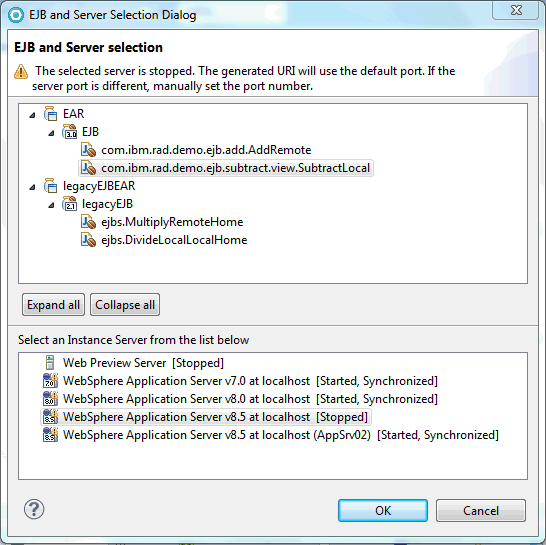

- RATIONAL APPLICATION DEVELOPER DYNAMIC WEB PROJECT HOW TO
- RATIONAL APPLICATION DEVELOPER DYNAMIC WEB PROJECT INSTALL
The Object Relational Designer is displayed. In the Name box, enter a name for the database model.įor example, enter the name AdventureWorks.dbml. Under Visual Studio installed templates, click LINQ to SQL Classes. Right-click the App_Code folder and then click Add New Item. If the Web site does not already have an App_Code folder, in Solution Explorer, right-click the project, click Add ASP.NET Folder, and then click App_Code. To create the data model using LINQ to SQL The procedure differs slightly depending on whether you want to use LINQ to SQL or the ADO.NET Entity Framework to create the data model. The next step is to create the data model. However, the procedure for doing this is not covered in this walkthrough. If it is impractical to make a copy of the database, you can connect to it by using an alternative method, such as attaching the database file directly. This procedure will create a copy of the database file in the project. mdf file is installed in the path C:\Program Files\Microsoft SQL Server\MSSQL.1\MSSQL\Data\AdventureWorks_Data.mdf. The Add Existing Item dialog box is displayed.Įnter the location where you installed the AdventureWorks database file (AdventureWorks_Data.mdf).īy default, the. In Solution Explorer, right-click the App_Data folder, and then click Add Existing Item. If the Web site does not have an App_Data folder, in Solution Explorer, right-click the project, click Add ASP.NET Folder, and then click App_Data. If you created the Web site using the Dynamic Data Entities Web Site template, you must create the database model using the Entity Framework.įor more information about selecting the data model, see ASP.NET Dynamic Data Guidelines. If you created the Web site using the Dynamic Data Web Site template, you must create the database model using LINQ to SQL. You have the following choices to create the database model based on the template you selected:

To do so, you create classes to represent database entities by using a tool provided by Visual Studio, and then register the data context for use by Dynamic Data. The next step is to add a database to the project. Visual Studio creates the folder and the structure for the Web site. In the Language list, click the programming language that you prefer to work in. In the first Location box, select File System, and in the second box, enter the name of the folder where you want to keep the pages of the Web site.įor example, enter the folder name C:\WebSites\DynamicData. Under Visual Studio installed templates, select Dynamic Data Web Site (to use LINQ to SQL) or Dynamic Data Entities Web Site (to use the ADO.NET Entity Framework). The New Web Site dialog box is displayed.

Or if you do not have this option, click New, and then click Web Site. Start Visual Studio or Visual Web Developer. You can create Dynamic Data Web sites in Visual Studio by using a Web site template.
RATIONAL APPLICATION DEVELOPER DYNAMIC WEB PROJECT INSTALL
Make sure that you install the correct version of the sample database for the version of SQL Server that you are running (Microsoft SQL Server 2005 or Microsoft SQL Server 2008).
RATIONAL APPLICATION DEVELOPER DYNAMIC WEB PROJECT HOW TO
For information about how to download and install the SQL Server sample database, see Microsoft SQL Server Product Samples: Database on the CodePlex site.

Microsoft Visual Studio 2008 Service Pack 1 or Visual Web Developer 2008 Express Edition Service Pack 1.Įither the AdventureWorks or the AdventureWorksLT sample database. In order to complete this walkthrough, you will need: See a video that shows this feature: Watch. In this walkthrough you will build an application that displays pages of data from the AdventureWorks sample database. These auto-generated Web pages provide display, insert, delete, and edit capabilities for each table. When the scaffolding mechanism is enabled in a Dynamic Data Web site, ASP.NET analyzes your data model and generate Web pages dynamically for each table. An important feature of Dynamic Data is the scaffolding mechanism. Dynamic Data enables you to create a data-driven Web site with minimal or no additional code. This walkthrough shows you how to create a basic Web application that uses ASP.NET Dynamic Data.


 0 kommentar(er)
0 kommentar(er)
